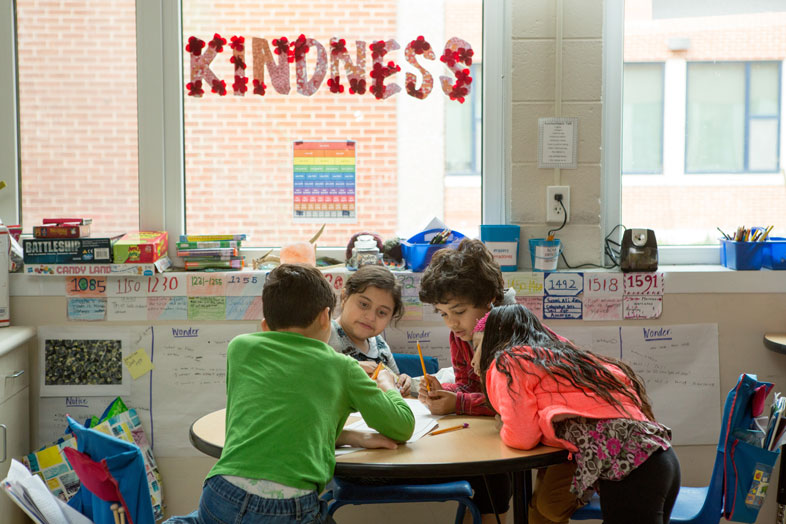
Getting Out of the Statehouse and Into the Schoolhouse When Covering LGBTQ Students
Here are 3 suggestions to better cover LGBTQ students.
Photo credit: Allison Shelley for EDUimages

Here are 3 suggestions to better cover LGBTQ students.
Photo credit: Allison Shelley for EDUimages
A consistent criticism from LGBTQ organizations of media coverage of assault on gay and trans rights is that it features too few of the people most affected. Here are three suggestions for education reporters seeking to counter this.
Challenge the narrative: Francisco Vara-Orta is a former Education Week staff writer and EWA board member who is now director of diversity and inclusion for Investigative Reporters and Editors. Reporters need to push back on misleading or false assertions, he says.
“I think the worst thing that I’ve seen is a lack of challenging narratives that are used by demagogues,” says Vara-Orta, who is gay. “As journalists, we have to remember to assert our own professionalism, our competence, to do these stories better instead of overcorrecting to appease some kind of invisible critic in the back of our head.”
Fairness and transparency to readers dictate that reporters lay out the reasons why proponents of anti-LGBTQ policies think they are needed, but it’s also crucial to point out the measures’ discriminatory and dangerous impacts.
Show us the kids-eye view: Too frequently lost in the news cycle is any examination of what it is like for young people exploring their own identities to absorb all of this — or to attend a school where adults are reacting to the maelstrom.
“Horse-race” coverage obscures the impact political vitriol has on youth in particular, says Vara-Orta. Even gay and trans youth who get affirmed at home and at school can’t escape the news. A court may overturn a discriminatory law, but kids continue to carry the trauma of the debate.
“We move on to the next story,” he points out, “but they will live this for the rest of their lives.”
In addition to covering education and the economy for the Burlington County Times in New Jersey, Aedy Miller is a transgender woman and a lesbian who uses they/them pronouns. A member of the Trans Journalists Association, they recently wrote about the stress anti-LGBTQ bills around the country have created for New Jersey youth.
In their story about the national climate, Miller put the number of high school trans athletes in context: “A USA Today investigation found that roughly 30 trans athletes competed in high school sports during the 2020-21 academic year in the 14 states that recorded such data…. According to an Associated Press survey, sponsors of these bills in more than 20 states struggled to cite examples of trans girls in sports in their states.”
“It doesn’t end with just the sports ban,” a trans senior told Miller. “You can ban a kid from soccer, but what’s going to stop you from banning the kid from a choir or dance class?”
To get a better idea what matters to LGBTQ students, Miller suggests contacting organizations young people turn to for support, such as Trans Student Educational Resources and the National Center for Transgender Equality, which offers a fact sheet on students’ rights in schools.
Unpack the data — or the lack of it: Another issue Vara-Orta says reporters sometimes encounter when pitching LGBTQ stories is a lack of the kind of data that frequently gets a story green-lit. Because education data is rarely broken out by gender identity or sexual orientation, it can be hard to prove a problem is widespread or persistent.
Sometimes the lack of data itself merits a story — or at least an explanation, says Vara-Orta. If more information about educational outcomes for gay and trans students existed, it could reveal significant disparities or disprove myths.
The datasets that do exist are ripe for exploration.
Your post will be on the website shortly.
We will get back to you shortly